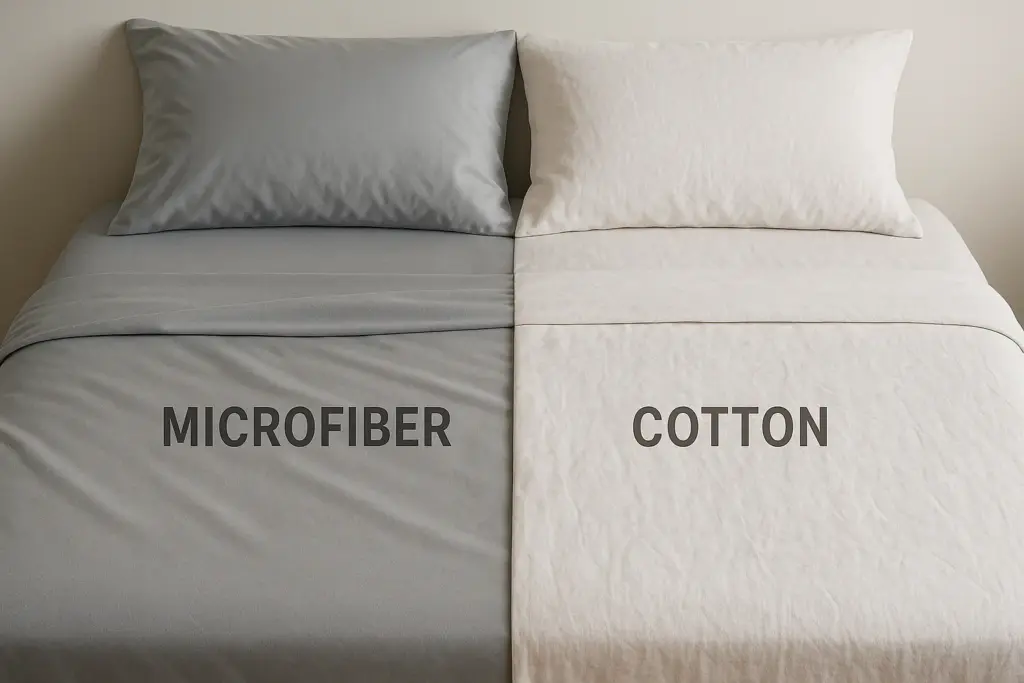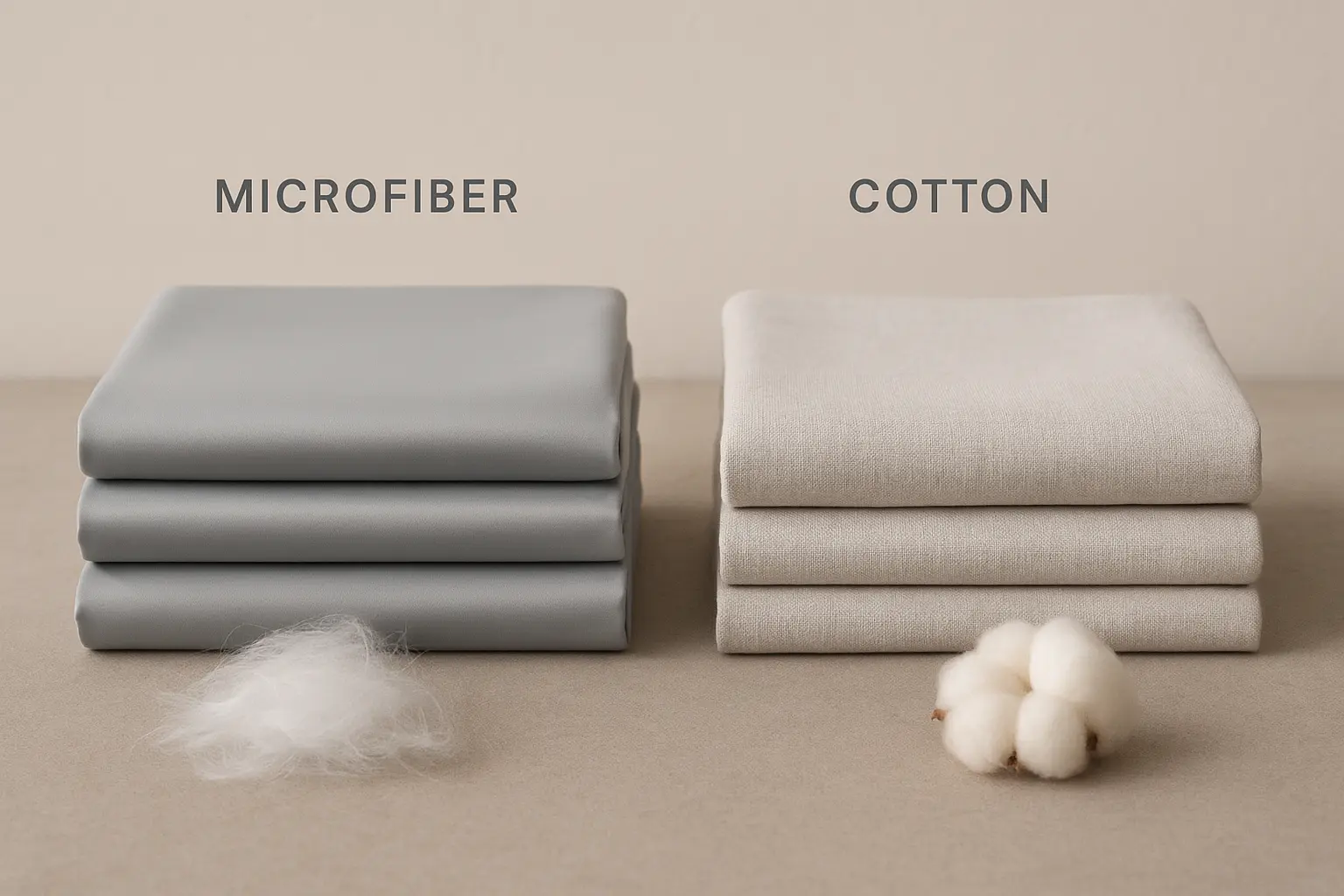When it comes to getting a good night’s sleep, your bed sheets play a bigger role than you might think. With so many options on the market, two of the most popular choices are microfiber and cotton sheets. Each has its own unique qualities, benefits, and drawbacks. If you’re wondering which one is best for your needs, read on as we break down the differences and help you make an informed decision.
What Are Microfiber Sheets?
Microfiber sheets are made from finely woven synthetic fibers, usually polyester or a blend of polyester and nylon. The fibers are extremely thin—finer than a single strand of silk—which gives microfiber sheets their characteristic softness and smooth texture.
Key Features of Microfiber Sheets:
- Soft and Smooth: Microfiber sheets feel silky and soft right out of the package.
- Lightweight: They are generally lighter than cotton sheets.
- Wrinkle-Resistant: Microfiber resists wrinkles and maintains a neat appearance with minimal effort.
- Affordable: Typically less expensive than high-quality cotton sheets.
- Durable: Resistant to pilling and tearing, especially for higher quality or denser weaves.
- Moisture-Wicking: Microfiber can wick away sweat, though it may not be as breathable as cotton.
What Are Cotton Sheets?
Cotton sheets are made from natural cotton fibers. There are different types of cotton sheets, including Egyptian, Pima, and regular cotton, each offering varying levels of softness and durability.
Key Features of Cotton Sheets:
- Breathable: Cotton is highly breathable, making it ideal for hot sleepers.
- Softens Over Time: Cotton sheets become softer with each wash.
- Natural Material: Hypoallergenic and less likely to cause skin irritation.
- Variety: Available in different weaves (percale, sateen, flannel) and thread counts.
- Durable: High-quality cotton sheets can last for years with proper care.
- Absorbent: Cotton absorbs moisture, which can help keep you cool and dry.

Microfiber vs Cotton: How Do They Compare?
| Feature | Microfiber Sheets | Cotton Sheets |
|---|---|---|
| Feel | Silky, smooth, soft | Crisp, softens over time |
| Breathability | Less breathable, can trap heat | Highly breathable, cool to the touch |
| Durability | Very durable, resists pilling | Durable, especially at higher quality |
| Care | Easy care, wrinkle-resistant | May wrinkle, easy to wash |
| Price | More affordable | Can be pricier for premium cotton |
| Allergy | May attract dust, not natural | Hypoallergenic, natural material |
| Moisture | Wicks moisture, dries quickly | Absorbs moisture, stays cool |
Pros and Cons
Microfiber Pros:
- Budget-friendly
- Soft and smooth feel
- Low maintenance
- Quick-drying
Microfiber Cons:
- Less breathable; can trap heat
- Not a natural fiber
- May attract static and lint
Cotton Pros:
- Natural and hypoallergenic
- Breathable and moisture-absorbing
- Becomes softer with use
- Suitable for sensitive skin
Cotton Cons:
- Can wrinkle easily
- Higher quality sheets can be expensive
- May shrink if not cared for properly
Which Should You Choose?
- Choose Microfiber if:
- You want soft, affordable sheets that are easy to care for and wrinkle-resistant.
- You don’t mind synthetic materials and live in a cooler climate or use air conditioning.
- Choose Cotton if:
- You value breathability, natural fibers, and long-term durability.
- You tend to sleep hot or have sensitive skin.
Final Thoughts
Both microfiber and cotton sheets have their advantages. Ultimately, the best choice depends on your personal preferences, budget, and sleeping habits. Consider what matters most to you—be it softness, breathability, ease of care, or natural materials—and you’ll be well on your way to a more comfortable night’s sleep.
Do you prefer microfiber or cotton sheets? Share your experiences or questions in the comments below!


Leave a Reply